Key takeaways:
- Hands-on activities and experiential learning ignite students’ curiosity and understanding of marine biology, fostering a sense of responsibility for marine conservation.
- Education on animal protection cultivates empathy and empowers students to become advocates for sustainable practices in their communities.
- Immersive storytelling and emotional connections through personal experiences can inspire compassion and motivate students to engage in marine conservation.
- Practical activities, including field trips and citizen science projects, enhance learning and encourage students to take action in protecting marine ecosystems.
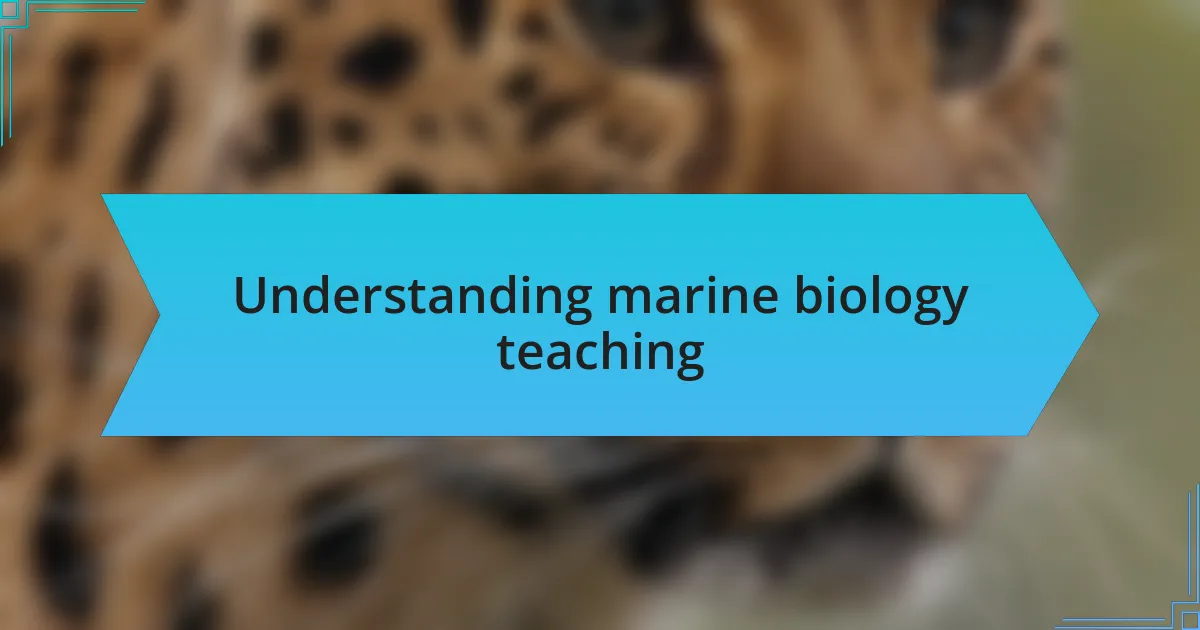
Understanding marine biology teaching
Teaching marine biology is more than just presenting facts; it’s about igniting a passion for the ocean and its inhabitants. I remember the first time I brought in seawater and live specimens for my students to explore. Their wide eyes and pure excitement reminded me why I love teaching—it’s all about sparking curiosity.
In my experience, the most effective teaching methods in marine biology often involve hands-on activities. Engaging students with interactive experiments not only enhances learning but also cultivates a sense of responsibility towards marine conservation. Have you ever seen a student’s face light up as they identify different species? That moment truly underscores the importance of experiential learning.
Moreover, discussions about real-time environmental issues can deepen their understanding significantly. When I introduced topics like coral reef degradation, students responded with genuine concern, asking how they could make a difference. It’s heartening to know that education can transform awareness into action, fostering future advocates for our oceans.
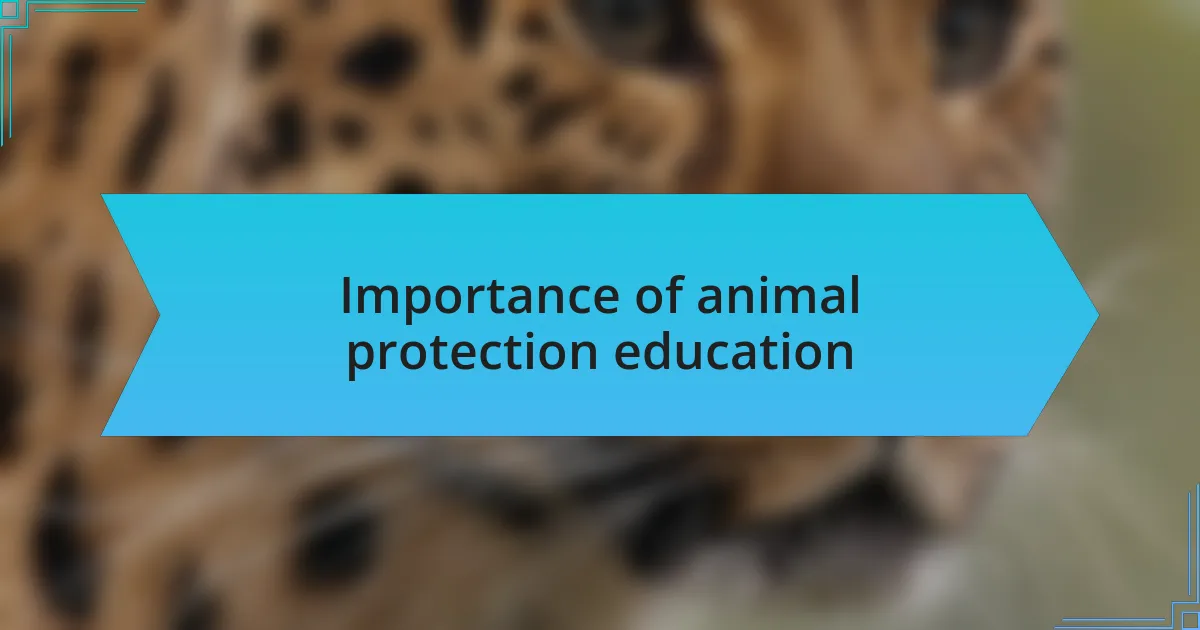
Importance of animal protection education
Educating students about animal protection is essential in fostering empathy towards all living beings. I recall an eye-opening moment in class when we discussed the plight of endangered species. One student, deeply moved, expressed concern about the extinction of the Amur leopard. That heartfelt reaction illustrated how knowledge can inspire empathy and become a catalyst for action.
Furthermore, I’ve seen how animal protection education shapes future leaders in conservation. During a group project on marine habitats, students researched the impact of plastic pollution. Their conversations revealed a growing awareness of their responsibilities as stewards of the environment. Can you imagine the ripple effect when these young minds become advocates for sustainable practices in their communities?
This education not only informs but also empowers individuals to make a difference. Like when we collaborated with a local wildlife rescue to rehabilitate injured animals, students experienced a profound sense of purpose. They didn’t just learn; they became active participants in the protection of our planet’s biodiversity, reinforcing that knowledge paired with action is truly impactful.
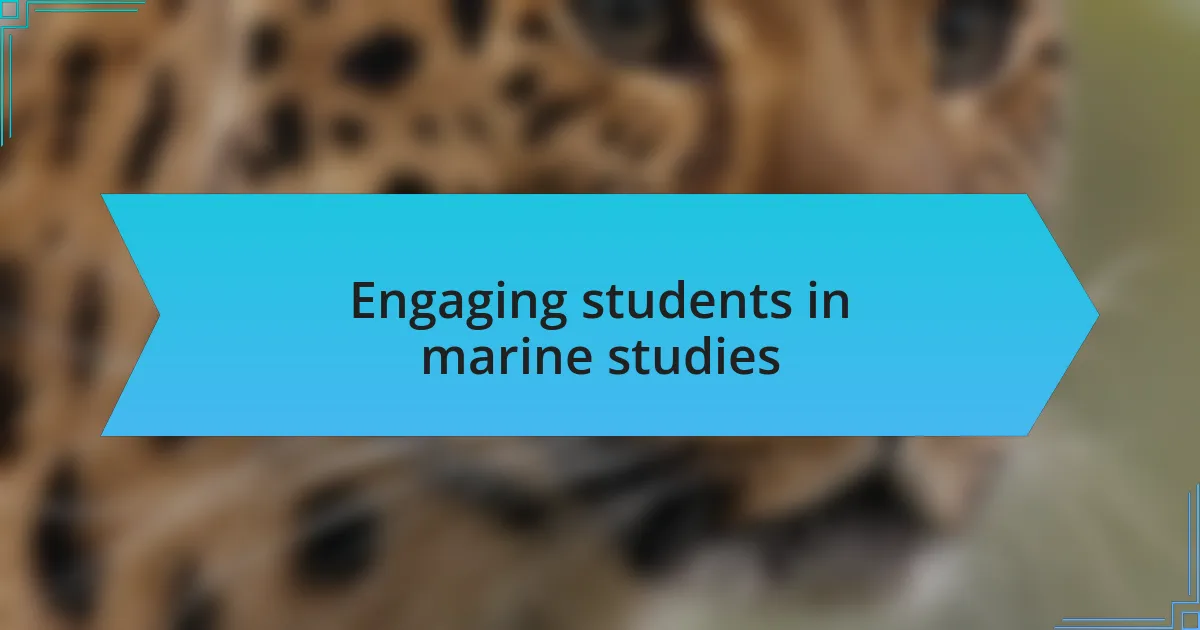
Engaging students in marine studies
Engaging students in marine studies requires creativity and a genuine connection to the subject matter. I remember organizing a beach clean-up event, inviting students to see firsthand the consequences of marine debris. The waves crashing and the sun shining created an atmosphere that sparked enthusiasm, but what truly ignited their passion was the sight of turtles entangled in plastic. It was a powerful moment that helped them realize they could make a tangible difference.
In my experience, using multimedia resources can enhance engagement significantly. One time, I showed a stunning documentary featuring vibrant coral reefs and their diverse inhabitants. Students were captivated, leaning forward in their seats, wide-eyed at the beauty and fragility of underwater life. This was not just learning; it was an emotional immersion that prompted lively discussions. How could anyone walk away from that without feeling compelled to protect our oceans?
I also found that incorporating hands-on activities is key to maintaining interest. For example, I designed a simulation game where students role-played as marine biologists studying a fictional ecosystem. The excitement in the room was palpable as they debated strategies to conserve their modeled environment. This interactive approach made abstract concepts like biodiversity feel personal and relevant. Don’t you think when students experience learning in such dynamic ways, they are more likely to carry that enthusiasm beyond the classroom?
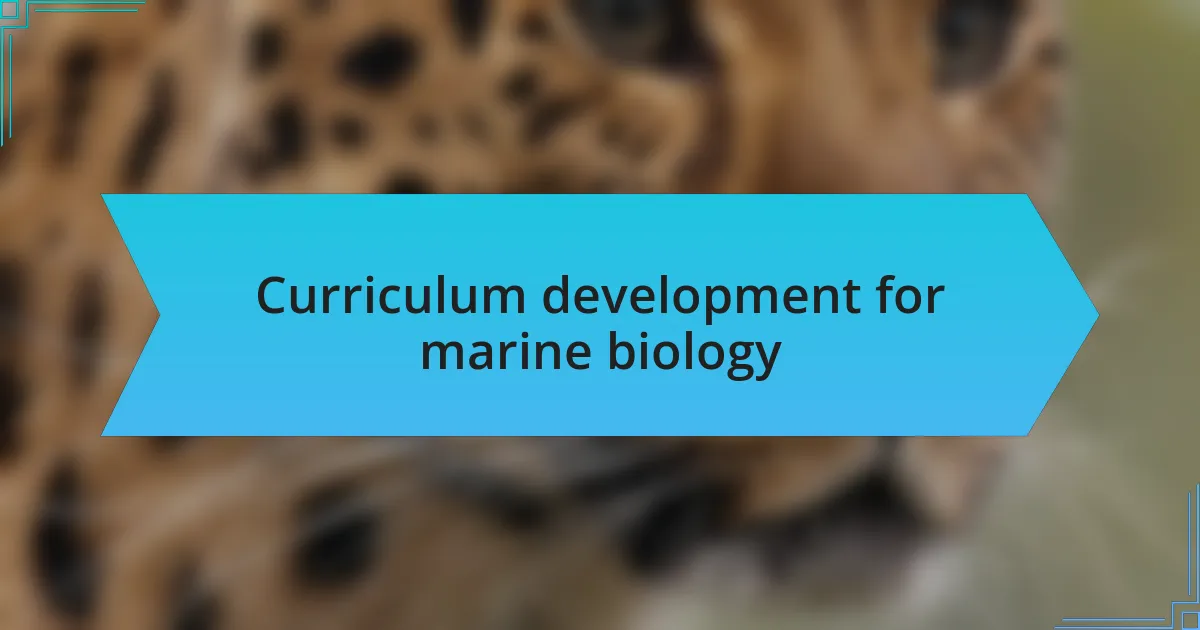
Curriculum development for marine biology
Curriculum development in marine biology demands a thoughtful balance of science and hands-on engagement. I once collaborated with local marine experts to create modules that combined theoretical knowledge with practical fieldwork. Seeing my students light up during a dive trip, where they identified species they had studied in class, reinforced my belief that real-world experiences anchor learning.
Additionally, I believe that infusing personal stories into the curriculum can deepen the emotional connection students have with the material. For instance, sharing my own encounters with marine life, like swimming with dolphins in their natural habitat, not only amazed my students but also showed them the joy of witnessing such wonders. Isn’t it these personal narratives that often fuel our desire to protect what we love?
Furthermore, integrating conservation topics into the curriculum is vital. I often include discussions on the impacts of climate change and pollution on marine ecosystems. When we explored the plight of endangered species, the students’ responses were heartfelt; many voiced their concerns and even proposed actionable solutions. How can we expect the next generation to protect marine life if we don’t equip them with the knowledge and passion needed for advocacy?
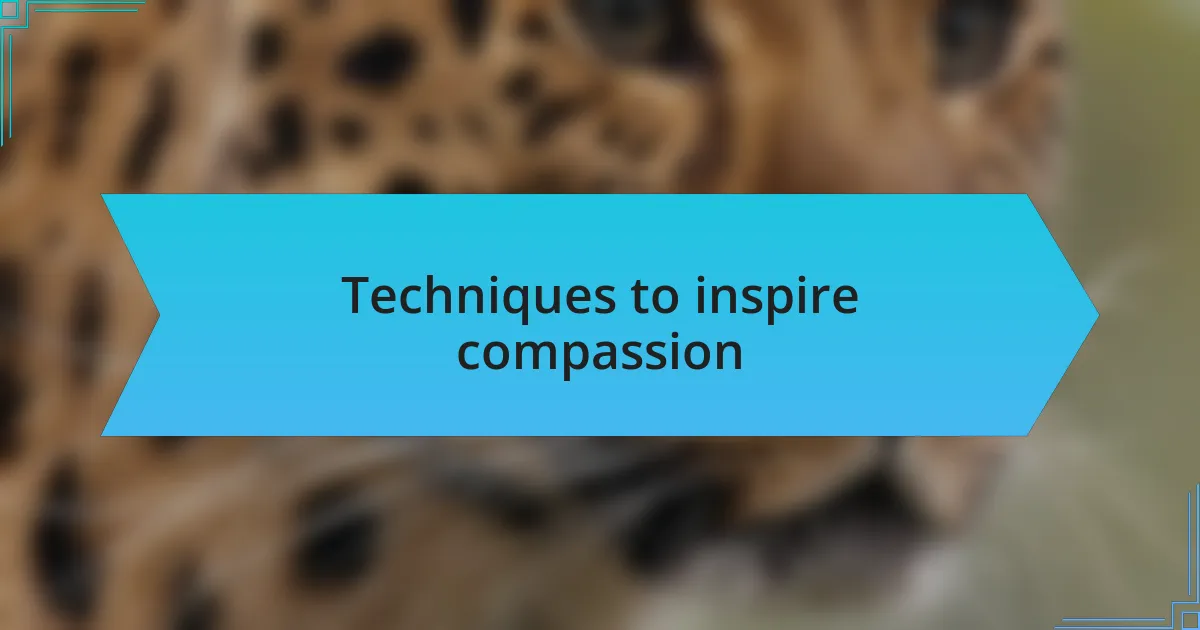
Techniques to inspire compassion
One effective technique I found to inspire compassion in my students is through immersive storytelling that transcends mere facts. During a class on shark conservation, I shared a gripping account of a rescue mission where I witnessed a stranded dolphin being saved. The emotional weight of that experience resonated deeply with the students. Have you ever seen the spark of empathy ignite in someone when they connect with a story on a personal level?
Another approach is the use of visual media to provoke emotional responses. I once presented a film that highlighted the beauty and fragility of coral reefs devastated by bleaching. The images were striking, and I watched my students’ faces change as they realized the stakes involved. This exercise made them rethink their daily choices and consider how these decisions impact ocean health. Isn’t it fascinating how a powerful visual can shift our perspective in an instant?
Finally, facilitating group discussions on personal values related to marine conservation can be incredibly impactful. By encouraging students to share their own experiences or feelings about marine life, it fosters a community of empathy. I remember one student opening up about a childhood summer spent by the ocean, describing it as her happiest place. Hearing such reflections often evokes a collective understanding of what we stand to lose, strengthening our commitment to marine protection. How can we foster that emotional connection to ensure they become proactive guardians of our oceans?
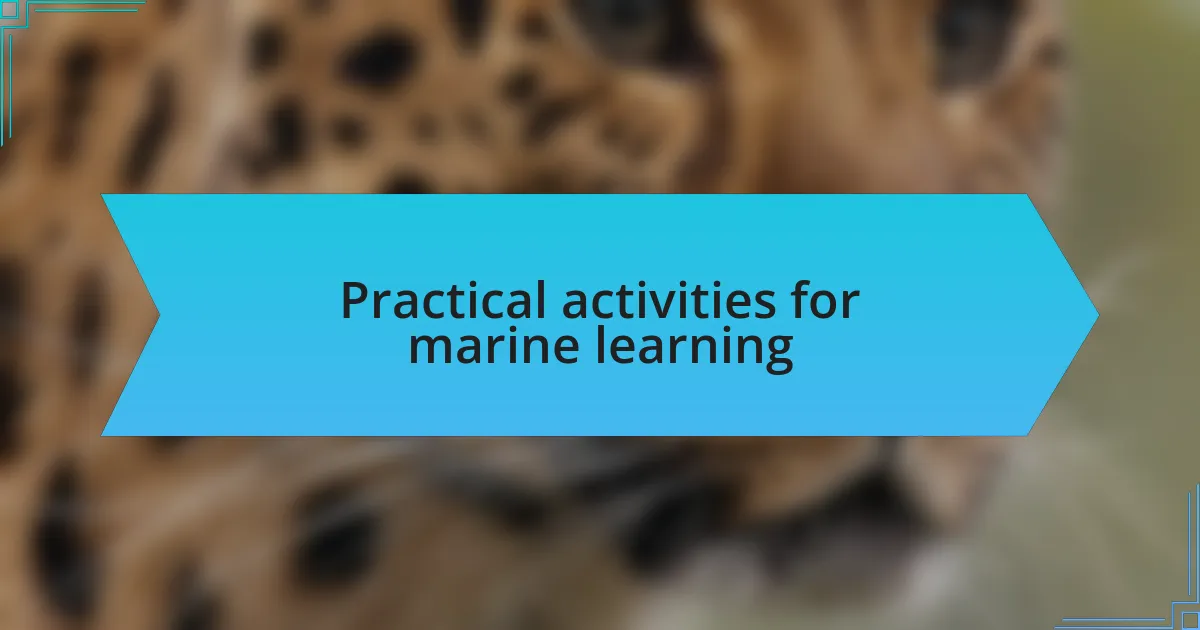
Practical activities for marine learning
Practical activities for marine learning can truly bring the subject to life in unexpected ways. One memorable session involved creating miniature marine ecosystems in plastic tubs. I watched as students carefully arranged sand, rocks, and live saltwater plants, each piece becoming a part of their own undersea world. Their faces lit up with curiosity when they discovered the tiny organisms that thrived there. Isn’t it amazing how hands-on activities can make theoretical concepts tangible and spark a lifelong interest?
Field trips to local shorelines have also proven invaluable. During one outing, I guided my students in collecting water samples and observing local marine life. As they splashed in the waves, a few of them uncovered vibrant starfish and anemones. The thrill of seeing these creatures up close stirred a sense of wonder, reminding me of my own childhood explorations. How often do we forget the magic that lies beneath the surface, waiting for curious minds to discover it?
Additionally, I emphasize the importance of citizen science in our curriculum. Engaging students in projects like monitoring coastal water quality or participating in beach clean-ups connects them directly with conservation efforts. I remember a student who found a tangled fishing net while cleaning the beach and became so passionate that she organized a community cleanup afterward. Moments like these underline how practical activities not only educate but also empower young minds to take action. Wouldn’t you agree that hands-on involvement is key to fostering a sense of responsibility?
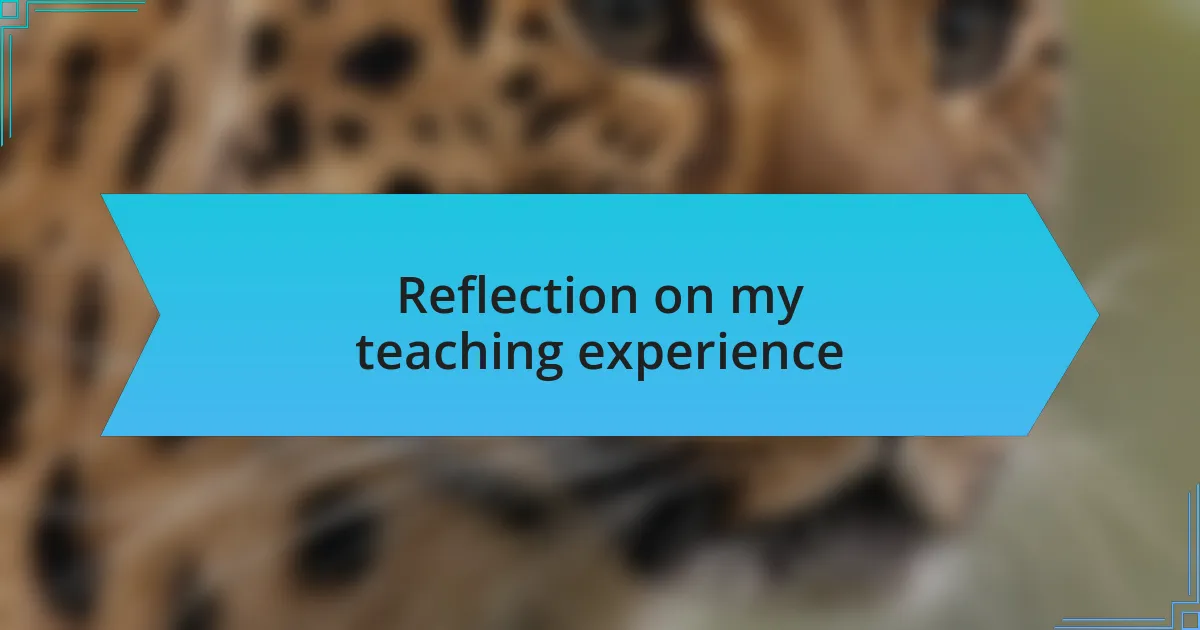
Reflection on my teaching experience
Reflecting on my teaching experience, I find myself constantly amazed at the transformation I witness in my students. One lesson, in particular, stands out; during an underwater simulation, students acted as marine biologists, and their enthusiasm was palpable. Watching them step into those roles, I realized how empowering it can be for them to see themselves as stewards of the oceans.
I still remember the day one student, overwhelmed with emotion, shared her thoughts on the interconnectedness of marine life. She expressed a deep concern for coral reefs after our discussions on their plight, and I was struck by how one conversation could ignite such passion. I often wonder how many young minds are waiting for a spark to fuel their commitment to environmental advocacy.
Another poignant moment for me was when a group of students decided to create a fundraising campaign for marine conservation. Their energy was contagious, and it reminded me of the importance of providing a platform for their voices. It makes me reflect: how can we harness that raw enthusiasm in our future classes to encourage even greater involvement in conservation efforts?